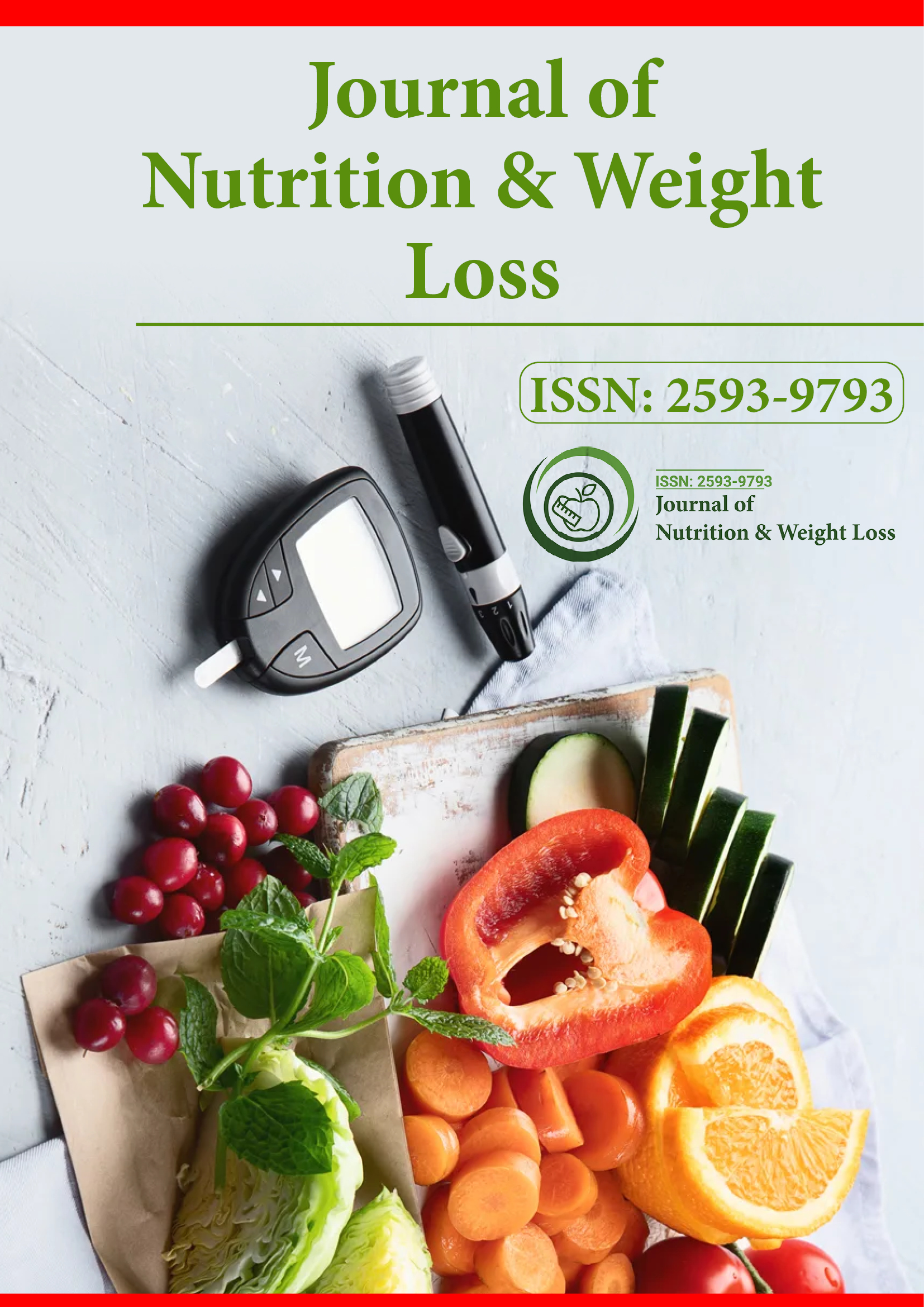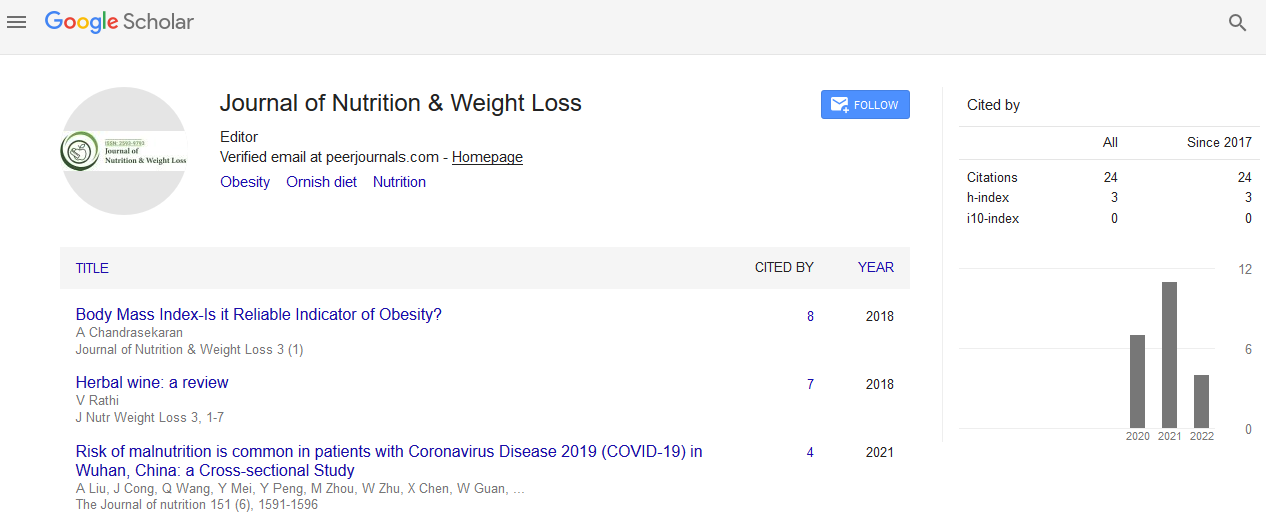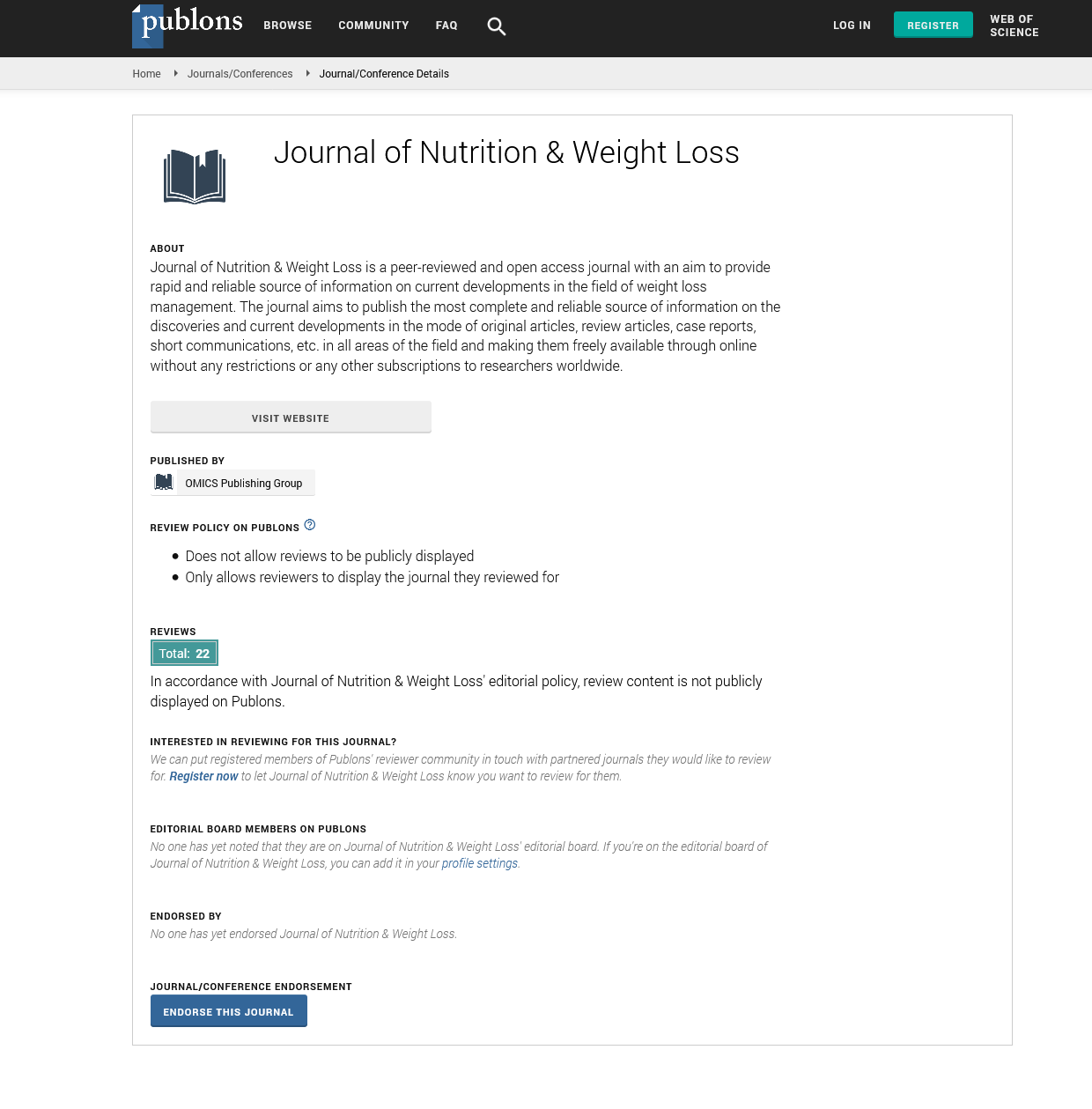Indexed In
- RefSeek
- Hamdard University
- EBSCO A-Z
- Publons
- Euro Pub
- Google Scholar
Useful Links
Share This Page
Journal Flyer

Open Access Journals
- Agri and Aquaculture
- Biochemistry
- Bioinformatics & Systems Biology
- Business & Management
- Chemistry
- Clinical Sciences
- Engineering
- Food & Nutrition
- General Science
- Genetics & Molecular Biology
- Immunology & Microbiology
- Medical Sciences
- Neuroscience & Psychology
- Nursing & Health Care
- Pharmaceutical Sciences
Opinion - (2021) Volume 0, Issue 0
Role of Glycerol in Dairy Diets: A Systemic Review
Sonika Sharma*Received: 09-Nov-2021 Published: 30-Nov-2021, DOI: 10.35248/2593-9793.21.s4.145
Opinion
There is an expanding interest in the creation of biodiesel as bio- inexhaustible fuel source, with various biofuel by items opening up. The yearly creations of biodiesel and unrefined glycerol were 34.5 and 3.8 billion liters, separately, in 2016 and that of biodiesel is relied upon to arrive at 41 billion liters in 2019. Glycerol is a sugar liquor without a shading or scent, however with a sweet taste and high solvency file in water. Tests support the utilization of glycerol at low levels going from 5% to 8% of the eating routine dry matter as a progress cow treatment. Organization of glycerol expands serum glucose and diminishes ketone bodies. Glycerol is quickly matured in the rumen to propionate and butyrate, to the detriment of acetic acid derivation, bringing about a diminished milk fat. Since glycerol is profoundly aged in the rumen, it requires a transformation period toward the start of taking care of. Organization of glycerol in the eating routine of lactating creatures was resembled with a diminished or an unaffected feed admission in many tests. Improved ruminal climate to upgrade supplement absorbability was seen in many investigations; nonetheless, others noticed diminished assimilation of dietary fiber with taking care of glycerol. Upgraded, brought down, or unaffected milk creation and piece were seen with the organization of glycerol in lactating creature consumes less calories; in any case, much of the time, glycerol diminished milk fat substance. The irregularities between aftereffects of analyses are because of the level and the immaculateness of glycerol, abstains from food, creation phase of the creatures, and different variables. Accordingly, further examination ought to be directed to set up the viability of various levels, virtue and organization times of glycerol, and creation phase of dairy creatures took care of glycerol-based or enhanced weight control plans.
Regarding the calving time, dairy cows are defied by particular wholesome difficulties. For the most part, multi week prior and 3 weeks in the wake of calving, feed utilization decays by around 30%, making a cow in a negative energy balance. Glucose is the main supplement needed for milk combination. The liver is liable for changing propionate from ruminal maturation over to glucose and starch, and furthermore integrating glucose from glucogenic amino acids and glycerol from fat fatty oils. Glucose is used essentially for milk creation in the mammary organ. With low feed admission and glucose supply, the dairy cow prepares a lot of muscle to fat ratio, causing fat aggregation in the liver which brings about brought down blood glucose, improved ketone bodies creation, and eventually ketosis. The ineptitude of gestating dairy cows to dodge the issue of feed consumption decrease towards calving and during the initial not many long stretches of calving constrains creature nutritionists to investigate strategies to beat feed sadness around calving. Oral soaks of some glucose antecedents, for example, calcium-propionate and propylene glycol, were tried with great outcomes for glycerol dousing as a successful treatment of lactation ketosis. The metabolic pathway of glycerol is a lot nearer to that of glucose contrasted with other glucose antecedents.
As of late, there is an expanding worldwide interest for biofuels (ethanol and biodiesel), bringing about an expanded interest for the feedstocks (corn, wheat, and oilseeds) and taking off costs of domesticated animals takes care of. The fundamental side-effect during the creation of biodiesel is glycerol, which can be utilized as domesticated animals takes care of. In 2016, the yearly creation of unrefined glycerol was 3.8 billion liters while the biodiesel creation, which is relied upon to arrive at 41 billion liters in 2019, was around 34.5 billion liters. Biodiesel creation represents around 65% of world complete creation of glycerol. The fundamental clients of filtered glycerol are the restorative and drug ventures, which use around 3% to 4% of the complete glycerol creation. This has constrained glycerol makers to investigate new business sectors for this material, including its usage as a feedstuff for creatures, particularly with the new taking off costs of corn and thinks. The EU enactment endorsed glycerol as a feed added substance without any limitations as identified with creature species or amount that might be taken care of. Creation of a huge load of biodiesel has been accounted for to yield around 100 kg of rough glycerol. The piece of glycerol relies upon assembling process, and various grades might be accessible.
Glycerol, with its high and quickly accessible energy, has been utilized for a long time as an enhancement to ease ketosis in dairy creatures. It contains around 4.32 Mcal/kg gross energy and 2.27 Mcal/kg net energy for lactation (NEL). There are a ton of analyses on the use of glycerol, as an elective energy source, in the weight control plans of dairy creatures due to numerous unanswered inquiries in regards to the dealing with, paces of organization, and taking care of significant worth contrasted with other energy-rich feeds. The impacts of glycerol organization in the eating routine of lactating creatures are not reliable. Be that as it may, many trials detailed diminished feed utilization in cows, bison and goats, while improved dry matter (DM) and rough protein (CP) absorbability and diminished fiber edibility were seen in many analyses. Notwithstanding, specialist noticed expanded fiber edibility with glycerol supplementation. Expanded blood glucose and diminished ketone bodies fixations were seen in many investigations. Worked on brought down or unaffected milk creation and organization were seen with the organization of glycerol in lactating creature counts calories; notwithstanding, much of the time glycerol diminished milk fat substance. The irregularity between tests uncovers that more examinations are prescribed to approve or invalidate the significance of including glycerol as a feed fixing or feed supplement in the eating routine of lactating creatures. Accordingly, this survey sums up discoveries from explores directed on the use of glycerol in the eating routine of dairy creatures, gives data on its ruminal digestion, and functional use in dairy creature consumes less calories.
The current part surveys usage of glycerol as a result from biodiesel creation. In view of the group of examination led as of late, glycerol incorporation level ought not surpass 15% of the eating routine DM in dairy cow apportion. Such level doesn't cause adverse consequences in lactating cows. Glycerol could supplant energy- rich grains, like corn, with a similar proficiency, thinking about the financial advantages. Notwithstanding, some significant issues ought to be considered prior to taking care of glycerol to dairy cows, which incorporate the expulsion of methanol, trade of glycerol for just grains with quickly fermentable sugars, and the requirement for more examination to clarify conditions that permit and expand the useful utilization of glycerol in dairy cows diet because of the clashing consequences of its taking care of.
Expansion of glycerol to pelleted feed combinations for dairy creature appears to be encouraging. However glycerol can be joined into made feeds or absolute blended proportions, it might function admirably in pelleted concentrates. Blending glycerol at 5% with protein feeds and grains just as nutrient/mineral combination prior to pelleting was compelling in protecting high-dampness pellets as demonstrated by concealment of parasitic development. The nature of pellet and trustworthiness is unaltered or improved by glycerol expansion. This is a decent practice, which, be that as it may, may create high-dampness pellets with likely parasitic development. Blending glycerol in pellets enjoys a decent benefit, particularly with unrefined glycerol containing high methanol. Warming during pelleting makes the methanol volatilize, making this strategy for taking care of glycerol seriously encouraging.
Citation: Sonika S (2021) Role of Diet and Nutrition in Leprosy. J Nutr Weight Loss. 6:145.
Copyright: © 2021 Sonika S, This is an open-access article distributed under the terms of the Creative Commons Attribution License, which permits unrestricted use, distribution, and reproduction in any medium, provided the original author and source are credited.


